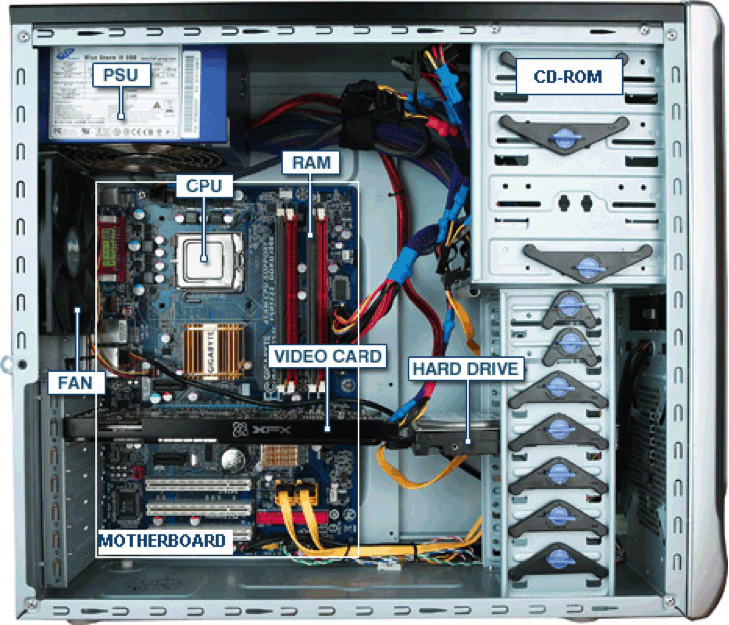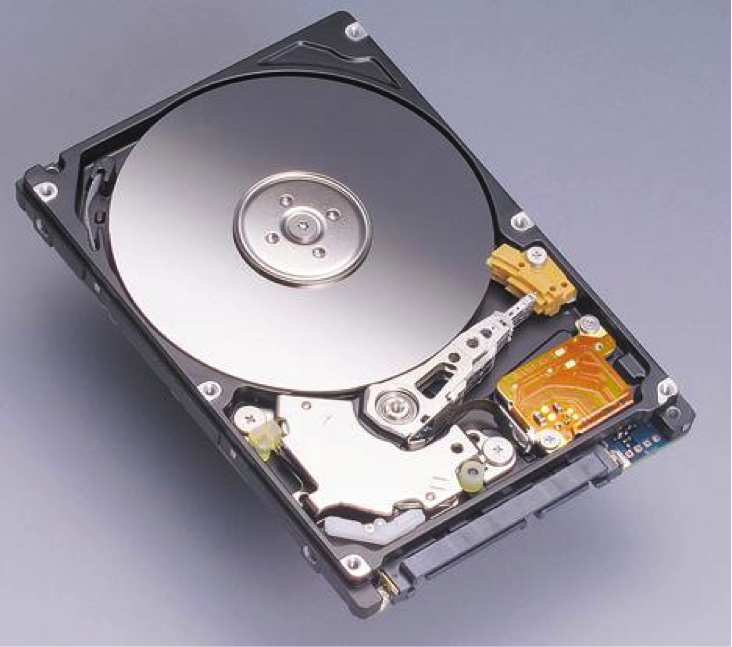Understanding Your Computer Hardware
Have you ever wondered how computer hardware works? Today we're looking at 4 key components and how they make your computer work. Check it out!
Have you ever wondered how computer hardware works? So many intricate electrical components work together to give you access to today's technical marvels, like computer software and the Internet. Today, we're going to look at four key components of your computer's hardware. To do that, we'll have to go inside your computer (*cue shrinking sound effects here*)...
What's Inside My Computer?
If we removed the tiny screws to open up your PC, you'd see something like the photograph below. Look for the item that's labeled the motherboard (it's the rectangle outlined in white at the lower left). While its appearance seems unassuming, the motherboard is incredibly important. It's a printed circuit board that serves as the foundation of your computer. It allows the CPU, RAM, hard disk drive, and all the other hardware components to communicate with each other. Many people call the motherboard "the heart of a computer."

Next, the CPU (Central Processing Unit) is known as a microprocessor. It processes instructions gathered from the code in programs and other files. A CPU has four primary functions: fetch, decode, execute, and write back. The computer's CPU is responsible for handling all instructions received from hardware and software running on the computer. It's basically the brains of the operation. The CPU also has a cooler, comprised of a heat sink and a fan. Considering its size (maybe as big as a fingernail, and new ones are getting smaller every day), it's amazing that, if not properly and regularly cooled, it can generate enough heat to melt within minutes. You can see the CPU labeled in the photo above.
How A Computer's Memory Works
RAM (Random Access Memory) is also known as system memory. RAM allows information to be written, stored, and accessed quickly from different places. This means that your files could be fragmented, saved in bits across your hard drive. (This is what makes defragmentation important for optimizing your computer's speed, because it moves all the bits of your files closer together.) Because information is accessed randomly instead of sequentially like on a CD or hard drive, the computer is able to access the data much faster than it would if it was only reading the hard drive. However, unlike a CD or hard drive, RAM is a volatile memory and requires power in order to keep the data accessible.

A stick of RAM.
As your computer boots, operating system and driver files are loaded into RAM, which allows the CPU to process instructions much faster, and thus, your computer boots faster. After the operating system has loaded, each program you open -- such as the browser you're using to view this blog -- is loaded into memory while it is running.
In comparison to RAM, your hard disk drive is very slow. If you have too many programs open simultaneously, the speed of your computer decreases significantly, because the CPU starts to store things on the hard drive instead of the RAM. Think of it this way: RAM is like playing music on a CD, where you can jump to any point and start playing. But with a cassette tape, you have to wind through everything before you get to the song you want. In a computer, Sequential Access Memory is like the tape, while RAM is like the CD.
The term "hard drive" is short for "hard disk drive." The term "hard disk" refers to the actual disks where all your files and folders are physically located. However, all three terms usually refer to the same thing. The hard drive is where your computer keeps everything that it remembers between reboots. Your operating system, programs, documents, saved email, and pictures all live there. Data is stored magnetically, so it stays on the drive even after the power supply is turned off. Neat, huh?

This is what the hard disk inside your computer looks like.
Computers are magnificent machines, and it's easy to take their complexity for granted. It's fascinating to see not only what a computer can do for you, but how the components which make it work interact with one another. We hope you enjoyed this brief introduction to the hardware inside your computer!
Free Question & Answer Session!
Still have questions about your technology? Unsure how Bask can protect and extend the life of your computers and devices? Call us today for a free question & answer session, or schedule one here: Speak with a Bask Technology Advisor.

 Member Connect
Member Connect